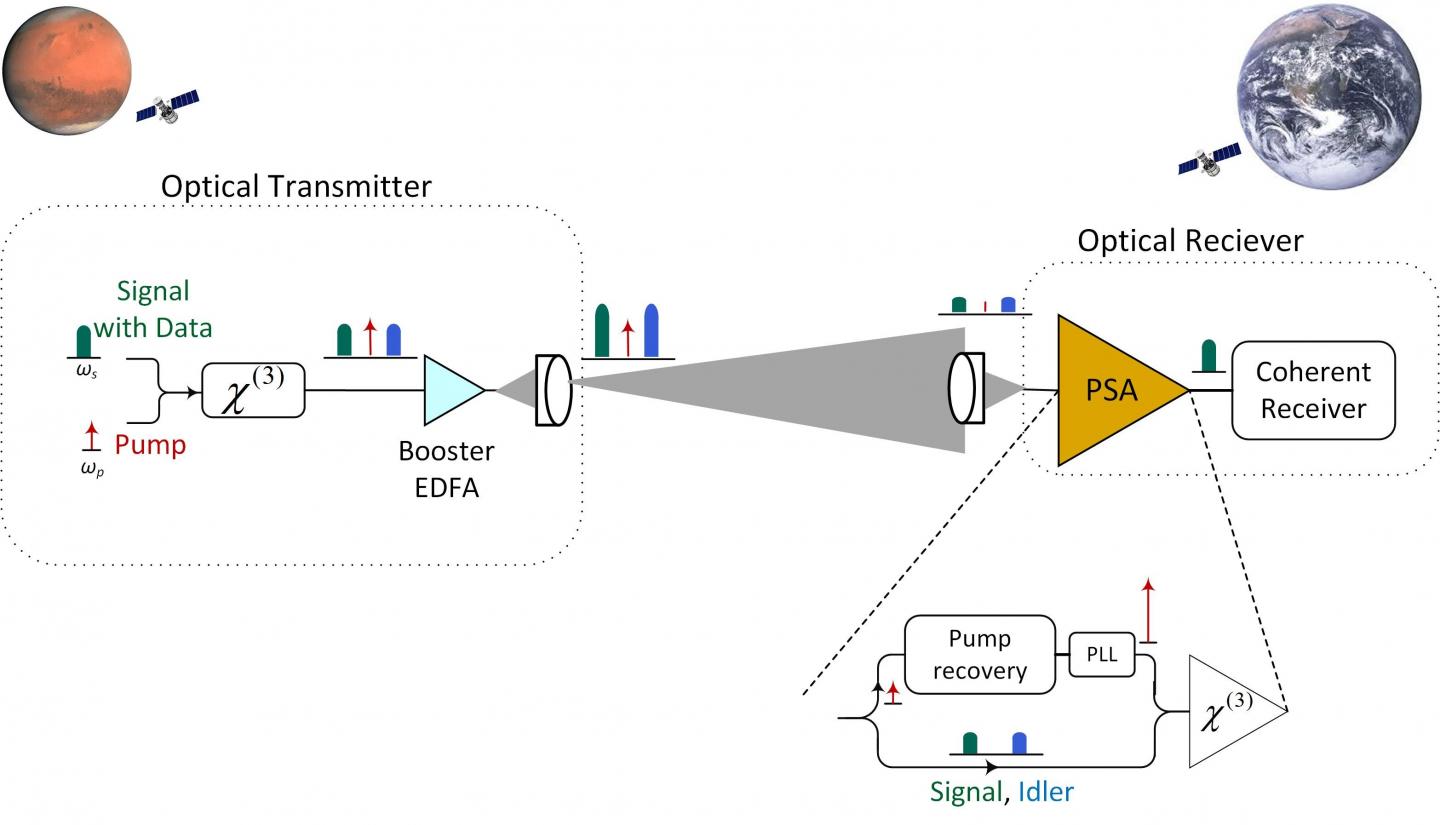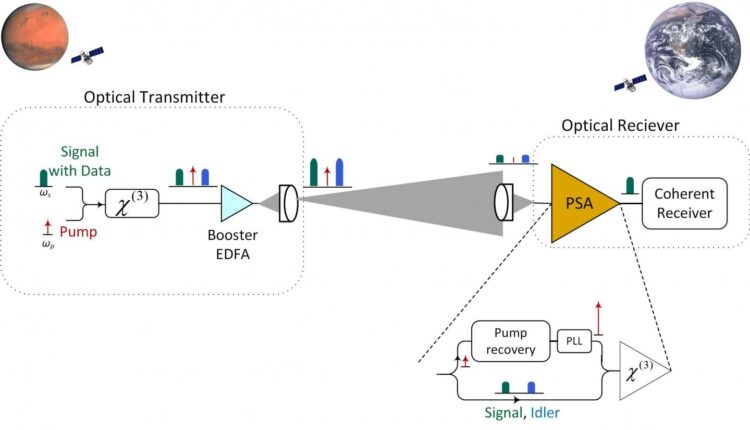
Credit: by Ravikiran Kakarla, Jochen Schröder, and Peter A. Andrekson
Space communication for deep-space missions, inter-satellite data transfer and earth monitoring require high-speed data connectivity. Such systems are increasingly using optical laser beams rather than radio-frequency beams. A key reason for this is that the loss of power as the beam propagates is substantially smaller at light wavelengths, since the beam divergence is then reduced. Nevertheless, light beams will also have substantial loss over long distances. As an example, the power lost when sending a laser beam from the Earth to the Moon (400,000 km) with a 10 cm aperture size will be about 80 dB (i.e. 1 part in 100 million will remain). As the transmitted power is limited, it is of critical importance to have receivers that can recover the information sent with as little received power as possible. This sensitivity is quantified as the minimum number of photons per information bit needed to recover the data without error.
A widely studied approach uses power-efficient pulse position modulation formats along with nanowire-based photon-counting receivers being cooled to only a few Kelvin while operating at speeds below 1 Gbit/s. However, to achieve multi-Gbit/s data-rates that will be required in the future, systems relying on pre-amplified receivers together with advanced signal generation and processing techniques from optical fiber communications are also being considered.
In a new paper published in Light Science & Application, a team of scientists, led by Professor Peter A. Andrekson, has developed a free-space optical transmission system relying on an optical amplifier that does not, in principle, add any excess noise in contrast to all other known optical amplifiers, referred to as a phase-sensitive amplifier (PSA).
In this concept, see figure 1, information is encoded onto a signal wave (green), which along with a pump wave (red) at different frequency generates a conjugated wave (an idler, blue) in a nonlinear medium denoted by . These three waves are launched together into the free space. At the receiving point, after capturing the light in an optical fiber, the PSA amplifies the signal and idler carrying data using a regenerated pump wave. The amplified signal is then detected in a conventional coherent receiver. This fundamentally result in the best possible sensitivity in any pre-amplified optical receiver.
With this approach, the team demonstrated an unprecedented error-free, “black-box” sensitivity of one photon-per-information-bit at a data rate of 10.5 Gbit/s. With 10 Watts of transmitter power, this receiver would allow for a link loss of 100 dB. The system uses a simple modulation format encoded with a standard forward error correction code and a coherent receiver with digital signal processing for signal recovery. This method is straightforwardly scalable to higher data rates if needed. It also operates at room temperature, allowing this to be implemented in space terminals and not only on the ground.
The theoretical sensitivity limits of this approach is also discussed in the paper and compared to other existing methods. A conclusion is that the above approach is the best possible for a very broad range of data rates.
The scientist summarize the results:
“These results show the viability of this new approach for extending the reach and data rate in long-haul space communication links. It therefore also has the promise to help break through the present-day science data return bottleneck in deep-space missions, which space agencies around the world are suffering from today.”
###
Media Contact
Peter Andrekson
[email protected]
Related Journal Article
http://dx.





